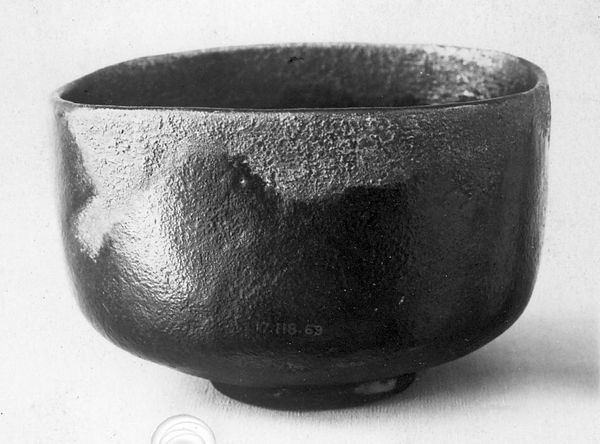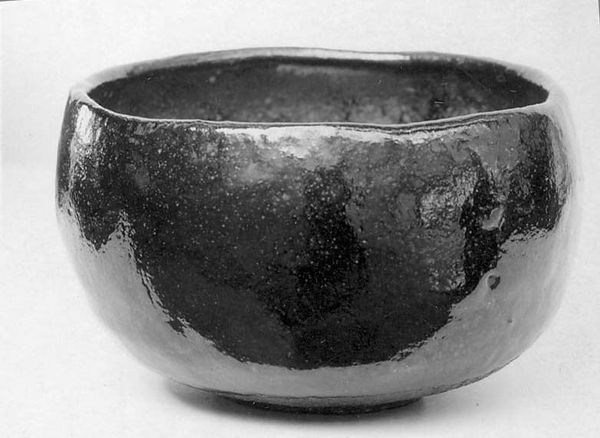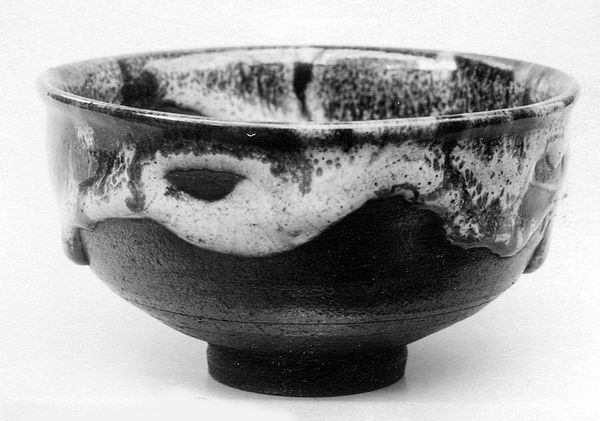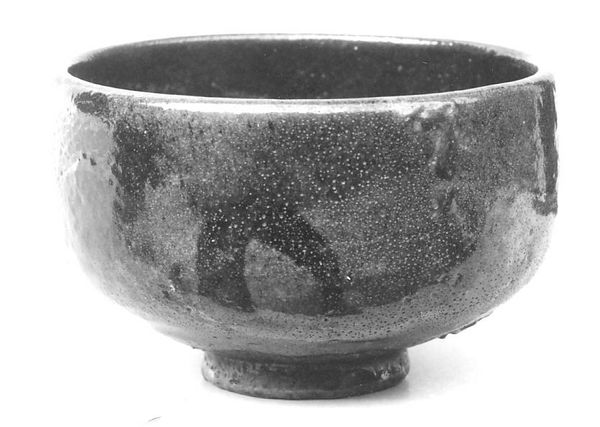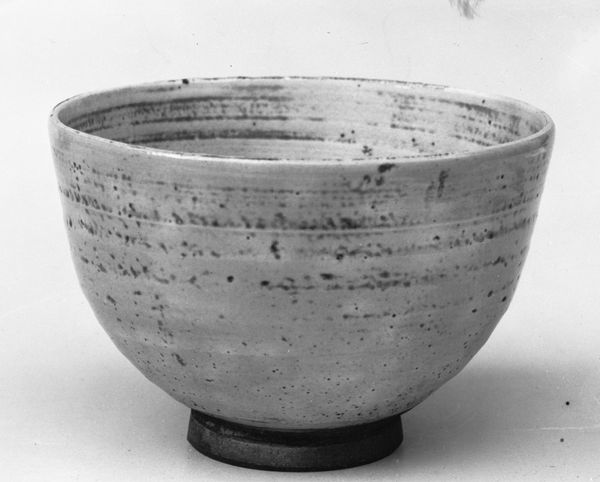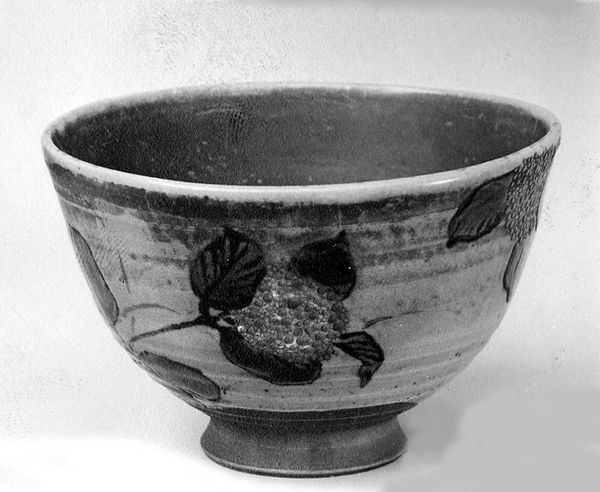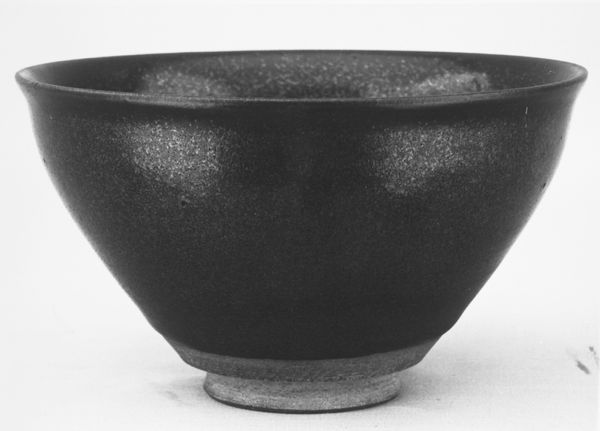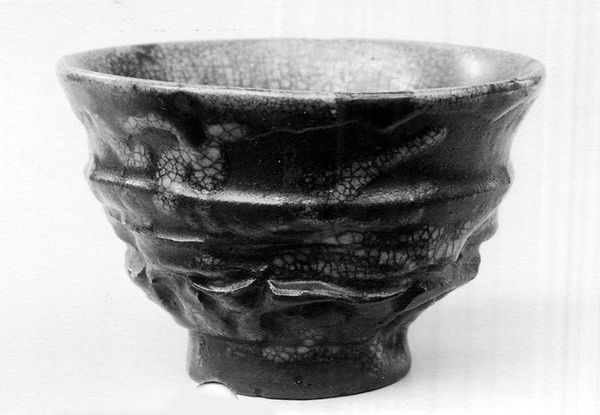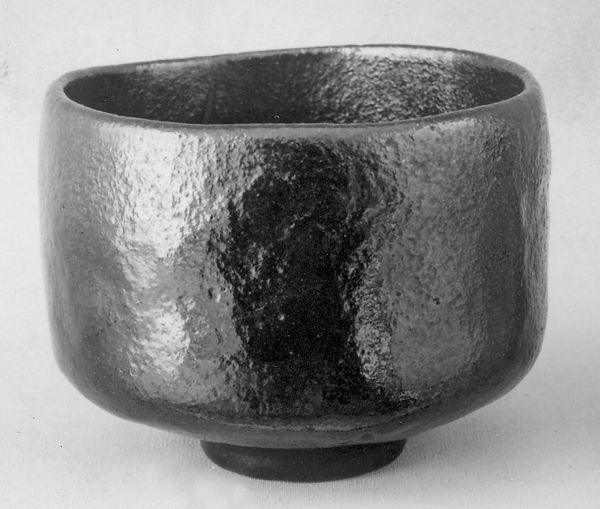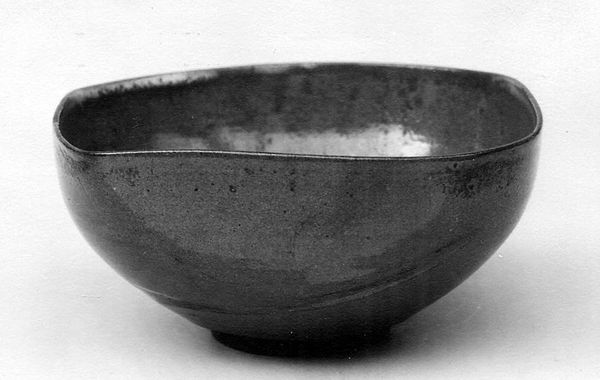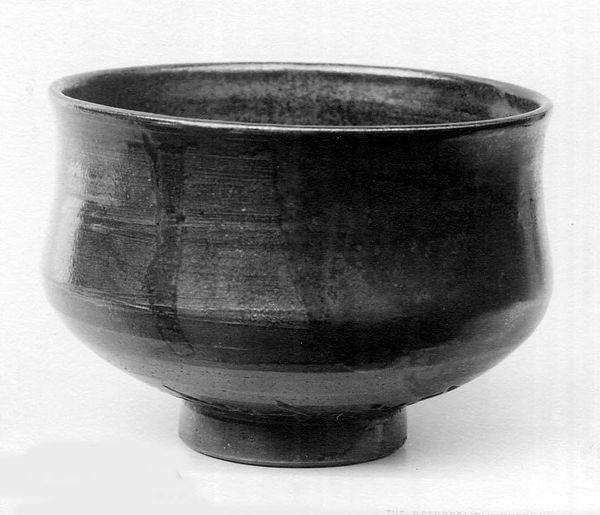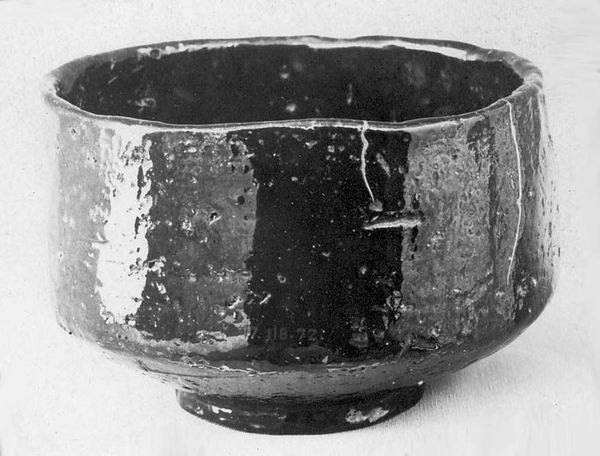
ceramic, earthenware
#
asian-art
#
ceramic
#
japan
#
earthenware
#
black and white
Dimensions: H. 2 7/8 in. (7.3 cm); Diam. 4 1/2 in. (11.4 cm)
Copyright: Public Domain
This teabowl was made by Seizan, from stoneware with a black glaze. Its appearance is influenced by the inherent qualities of its material, such as substance, texture, weight, color and form. The teabowl’s rough stoneware body and its drippy, imperfect glaze point to an engagement with the wabi-sabi aesthetic. The term describes a world view that embraces imperfection, impermanence, and simplicity. The bowl’s form follows from the labor and politics of firing practices. In raku firing, a technique often employed in Japanese ceramics, objects are removed from the kiln at their maximum temperature and then cooled rapidly. This intense thermal shock is what gives raku ware its characteristic crazed surfaces and unpredictable colors. While there is an element of chance involved, it also takes incredible skill to control the kiln environment. Ultimately, understanding the materials, making, and context is key to unlock the teabowl’s full meaning, challenging our perceptions of art and craft.
Comments
No comments
Be the first to comment and join the conversation on the ultimate creative platform.
